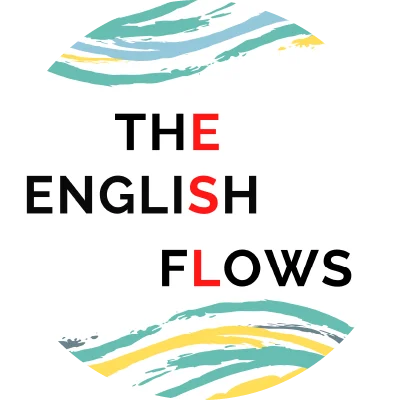

Dark tourism
Level B2 / C1
Topic Lifestyle ESL lesson plans
Type General English
Lesson plan overview
This ESL lesson plan explores the topic of dark tourism. It is focused on speaking and listening. You can combine it with the lessons “ Travel destinations “, “ Accessible tourism “, “ Adventure tourism and extreme tourism “, and “ The Chernobyl disaster “. Speaking: The lesson starts with a speaking task. Students are given a few photos of popular dark tourism sites ( Chernobyl, Auschwitz, Alcatraz ) and a few questions to discuss. Vocabulary: The vocabulary task is focused on adjectives ( morbid, emotionally draining, creepy ). Students are given a few sentences with the adjectives and they need to match them to their definitions. There is a gap-fill task as practice. As a speaking practice , there are 3 statements given. Next, there is another speaking task: students talk about the Do’s and Don’ts when it comes to behaving respectfully and appropriately when doing dark tourism. Video : Students watch a video “How to do ‘Dark Tourism’ respectfully” and complete 3 tasks. First, they watch the first 2 minutes of the video and answer 2 questions, then they watch the second part and write down the tips the speakers mention and finally, they watch the second part again and take notes about different tourist sites mentioned in the video. Collocations: students complete 7 collocations from the video ( morbid fascination, hallowed grounds, war atrocities) . The definitions are also provided. The last 2 tasks focus on speaking. In the first one, students brainstorm potential dark tourism sites in their country , they choose 1 and write a description for a dark tourism web page. The last task is a debate about dark tourism.
Unlock these resources with one of our subscription plans
Teacher’s lesson plan
Student’s worksheet
Student’s interactive PDF
Conversation cards PDF

Pre-class activities
All video-based ESL lesson plans include online pre-class activities, which are FREE and can be completed without registration. Perfect for teachers who wish to embrace the blended learning approach. By providing students with resources and engagement opportunities before the actual class session, educators can foster active participation, enhance comprehension, and optimise in-class discussions.
The pre-class activities are optional : if you choose not to assign them, or your students don’t complete them, it will not disturb the flow of the class. You can find and review the pre-class activities for this lesson plan here:
To send the pre-class activities to your students, copy the link below.

In-class activities
Get Premium to unlock
Get Premium Plus to unlock

Additional resources
Each video-based lesson plan includes links to additional resources (videos and articles), which are FREE can be found online (in the pre-class activities page. These links aim to extend the learning experience, enabling students to connect classroom knowledge with real-world applications.
Not sure yet?
Try one of our FREE lessons plans
Login using email and password. If you forgot your passowrd reset it here
Forgot your password?
Not a member? Sign up now
Share this lesson plan with someone who will find it useful

Become a member and discover where geography can take you.

- Fate, luck and...
- Is dark touris...
Is dark tourism OK?
To understand what dark tourism is and how people interact with hazardous landscapes for tourism.
Lesson objectives
To know what dark tourism is
To understand about Vesuvius as a tourist site
To discuss how these interactions shape what people think about hazards and place
To think about how images, language and stories shape these interactions
Ask pupils to discuss and note down what they think dark tourism is, and examples of places they have been, or know about, that may count as a dark tourist site. Pupils can then read this short article from National Geographic and note down what they identify.
Is dark tourism OK? (National Geographic, 2016)
Main activities
This exercise focuses on how the volcano, Vesuvius, became a tourist site, especially when it is erupting and how it has been experienced throughout history.
Watch the following videos, and discuss as a group:
Do you think the people of Pompeii and Herculaneum understood the environmental risk of living near Vesuvius?
Explain the ways you think these communities may have learned about their changing landscape.
You can also look at a nineteenth century volume called Sketches of Vesuvius of plates that show tourists visiting Vesuvius during eruptions.
Sketches of Vesuvius (1832)
As a group research the ways this practice has changed and reported. For example, there are numerous vlogs by YouTubers and Influencers available, documenting their visit to Pompeii.
Examine the resources you can find, and use your own research to discuss how and why visitors may have enjoyed experiencing this risks associated with Pompeii.
How are these experiences sold to consumers?
What kinds of language is used to describe these locations?
What sorts of images are used?
How do these materials indicate a different perception of risk?
Pupils should revisit the question posed by the article: is ‘Dark Tourism’ OK? Discuss their answers knowing they have engaged with materials. Reflect specifically on importance of diverse stories about environmental risk.
Extra reading
Goldsmith, S. (University of York) Danger and the Grand Tour : Sarah Goldsmith explores why 18th century Grand Tourists risked dangers such as mountain precipices, erupting volcanoes, battles, malaria and the ever-present danger of social failure.
Miller, J.C. and Del Casino, V. (2018) Negative simulation, spectacle and the embodied geopolitics of tourism , Transactions of the Institute of British Geographers, 43 (4) 661-673
Back To Top

- AI Lesson Planner
- Search Resources
- Become a Seller
- Your Account
- Education Blog
- Login/Register
Free and Premium Teaching Resources & Worksheets
- Dark Tourism
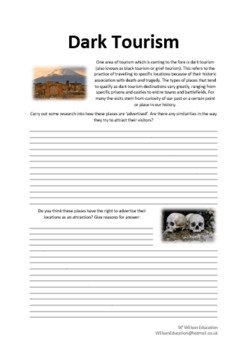
£2.00
- Item Details
Dark tourism has been around for many hundreds, if not thousands of years, but is only now coming to the fore. Dark tourism refers to the specific locations’ tourists visit due to their links to death or tragedy. There are many theories as to why people are attracted to these places.
This worksheet is a simple introduction to the topic looking at how similar destinations advertise themselves, whether it is thought right to advertise these places as ‘attractions’ and whether there is a location they would like to visit of the same genre.
These questions could be an interesting way to begin a unit on a tragic episode in our planets history and explain how we could learn from our past.
Please like and follow us on Facebook @WillsonEducation or Pinterest @willsoned for more exciting resources, activities, and upcoming events to incorporate into your lessons.
Write a Review
Review Title *
Save my name, email, and website in this browser for the next time I comment.

Leave a Reply
Related items may you also like.

The Vikings – Introductory Lesson KS2
Efl/eal guided writing- myjob, class rules induction pack.

Item Information
- Social Sciences
- Issue: * Copyright Infringement Spam Invalid Contents Broken Links
- Your Name: *
- Your Email: *
Join Free and Premium Teaching Resources & Worksheets | Lesson Planned
Login to free and premium teaching resources & worksheets | lesson planned.

What is dark tourism and why is it so popular?
Dark tourism is a type of tourism that has received increasing attention in recent years. TV shows, such as Chernobyl and The Dark Tourist, have introduced the concept of dark tourism to the minds of motives of many tourists around the world. But what is dark tourism? Is dark tourism ethical? How can you be a ‘good’ dark tourist?
In this post I will define the concept of dark tourism, explain why dark tourism is so popular and provide a few examples of dark tourism sites. I will also discuss the ethics of dark tourism, which are somewhat controversial.
What is dark tourism?
Dark tourism definitions
The dark tourism spectrum, why is dark tourism so popular, dark tourism documentary, dark fun factories , dark exhibitions , dark dungeons , dark resting places, dark shrines , dark conflict sites , dark camps of genocide, dark disasters, the ethics of dark tourism, dark tourism at auschwitz, dark tourism at chernobyl, dark tourism at hiroshima, dark tourism at the 9/11 memorial, dark tourism at the killing fields, dark tourism at bikini atoll, dark tourism in berlin, dark tourism at robben island, dark tourism in rwanda, dark tourism at oradur sur glane, dark tourism in pompeii, dark tourism at sedlec ossuary, dark tourism at the island of the dolls, dark tourism: key takeaways, dark tourism: faqs, dark tourism: a conclusion.
Dark tourism, also known as black tourism, thanatourism or grief tourism, is tourism that is associated with death or tragedy.
The act of dark tourism is somewhat controversial, with some viewing it as an act of respect and others as unethical practice.
Popular dark tourism attractions include Auschwitz, Chernobyl and Ground Zero. Lesser known dark tourism attractions might include cemeteries, zombie-themed events or historical museums.
Dark Tourism started to gain academic attention in the early 90s, but it is only recently that it has sparked the interest of the media and the general public.
An early definition defined by John Lennon and Malcolm Foley , define dark tourism as “the representation of inhuman acts, and how these are interpreted for visitors”.
In a more recent publication, Kevin Fox Gotham defines dark tourism as “the circulation of people to places characterized by distress, atrocity, or sadness and pain. As a more specific component of dark tourism, “disaster tourism” denotes situations where the tourism product is generated within, and from, the aftermath of a major disaster or traumatic event”.
Dark tourism has become the subject of academic debate more and more in recent years, most notably for its critiques and assessment of associated impacts.
Dark tourism encompasses many different ‘dark’ activities. These can range from visiting an attraction such as the London Dungeons, where people are seen laughing and joking (did you know it finishes with a height-restricted ride that imitates people being hung!?), to tourists racing to the scenes of a disaster to provide help and relief. Naturally these are two very different ends of the dark tourism spectrum.
To help us understand the dark tourism sector better, we can organise activities according to the dark tourism spectrum.
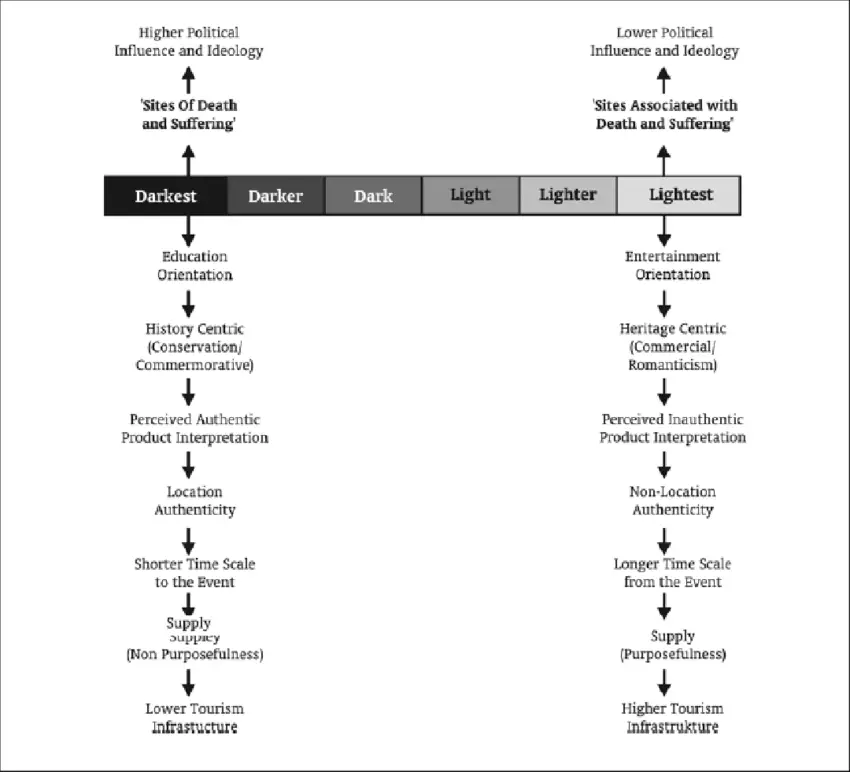
On one end of the spectrum (the darkest end) we have extreme or serious dark tourism activities. These are activities which often involve an educational element, such as learning about a Nuclear disaster or a ship wreck. Activities on this end of the scale are associated with an authentic experience, whereby the tourist visits an actual historical site or speaks with people who were involved. Examples might include visiting the Berlin Wall or Tuol Sleng and the Killing Fields in Cambodia.
On the other end of the spectrum, activities tend to be of a more commercial nature. A Jack the Ripper themed funfair ride or a comical play based around the Black Plague are effectively romanticised versions of dark events or times in history. The intention is for the tourist to have fun and enjoy themselves, rather than to be educated about said historical reference.
The question is, why is dark tourism so popular? Why do we choose to visit places of death and tragedy? What is it that attracts us to such sorrow?
For many, it is purely the possibility of being able to emotionally absorb oneself in a place of tragedy. It is important for people to engage and immerse themselves in past history and culture . By visiting dark tourism sites, we are able to give ourselves time to reflect on history.
Dark tourism has close ties with educational tourism. Particularly in cases of darkest/darker tourism. For many people, this is a dominant, if not their main, motivation for being a dark tourist. Whilst dark tourism may not be a happy leisure experience, many people enjoy the educational aspect that comes with it. I know that I have certainly enjoyed visiting famous cemeteries and learning more about WW2 during my travels to Berlin and Poland .
Visitors of dark tourism sites are from a wide socio-demographic group. Motivations stem from educational purposes, the desire to understand past affairs, etc. Whilst other motivations stem from the desire to experience something different or new.
I recently watched a series on Netflix called The Dark Tourist. In this show, journalist David Farrier focuses on dark tourism and tourist behaviour towards popular dark tourism sites that are historically associated with death and/or tragedy.
In each episode, David travels to a different dark tourism destination. Some of these sites I have visited before and others I have now added to my bucket list. If you’re interested in learning more about dark tourism attractions around the world then this is a great show to watch!
If reading is more your thing, there are also a couple of really great books on dark tourism. Two of my favourites are Don’t Go There: From Chernobyl to North Korea—one man’s quest to lose himself and find everyone else in the world’s strangest places and The Dark Tourist: Sightseeing in the world’s most unlikely holiday destinations. Both books are comical repertoires of the authors’ adventures and mishaps when visiting dark tourism attractions around the world. This makes for some great like, leisurely reading over a glass of wine or a cup of tea!

Types of dark tourism
According to Stone (2006), there are seven main types of dark tourism sites.
Fun factories are essentially play centres. Whilst these are usually associated with children, they can also be aimed at adults. There are, for example, escape rooms which evolve around a dark theme, zombie chases or theatrical activities that all take place in dark fun factories.
There are many different dark exhibitions throughout the world. I visited several during my travels to Berlin that were focussed on the Holocaust. I visited exhibitions on the Khmer Rouge Regime in Cambodia. I have been to exhibitions about the Vietnam War and many more.
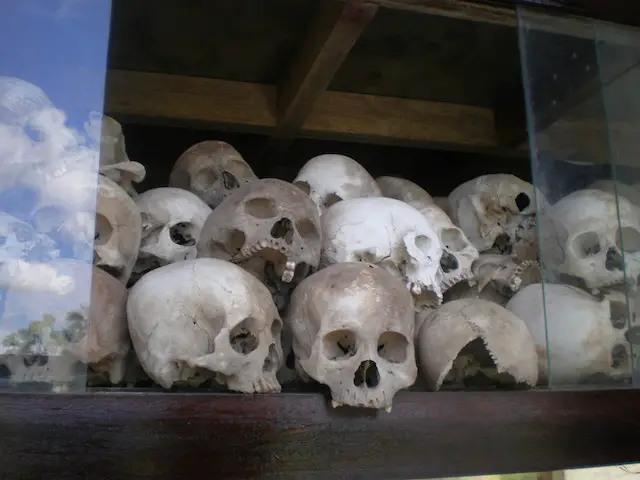
Dark exhibitions are a good opportunity for tourists to learn about the dark histories or events of a destination in a respectful way.
Many destinations open their historical dungeons for public viewing. These may be in their original state or they may have been altered for tours. The London Dungeons, for example, have become rather ‘Disneyfied’, in the way that they encompass live actors, sensory activities and rides.
There are some really interesting cemeteries that I have visited throughout the world. Whilst visiting a graveyard might not be at the top of every tourists list, you might be surprised at just how busy these places can be! Some famous cemeteries that I have visited include the Mount of Olives in Jerusalem, the Recoleta Cemetery in Argentina and Lenin’s Mausoleum in Moscow. Did you know the Taj Mahal is also a dark resting place? Yep, I’ve been there too.
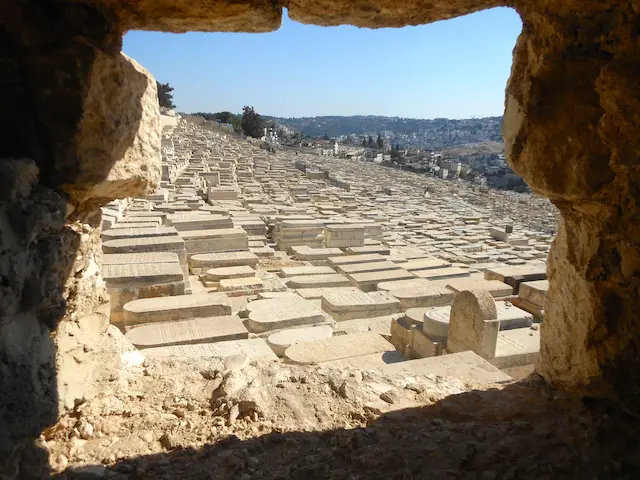
There are many shrines throughout the world which are popular tourist attractions, perhaps the most famous being the Dome of the Rock in Jerusalem. Shrines are especially popular in Asian countries.
Sites of conflict often become dark tourism sites once peace has been restored and a reasonable period of time has passed. One of the most interesting conflict sites that I have visited was Vietnam, where I learned all about the Vietnam War. The D-Day Beaches in France were also very interesting.
There are several areas of genocide which are popular with tourists. Whilst this is obviously a sad history, many people choose to visit sites such as Auschwitz or Karaganda, Kazakhstan to learn more about the history.
I think that Stone has missed out a key type of dark tourism in his list- disaster sites- so I will add this in below.
Disaster sites, whether in the immediate aftermath or after some time has passed, are popular with dark tourists. A subset of dark tourism, disaster tourism has increased in popularity in recent years. The recent documentary on Chernobyl, which was ranked the most highly user rated TV series ever, has helped raise awareness of disaster tourism amongst the public and tourism to this area has since increased significantly. I have written a detailed post on this topic, you can click here to read it: Disaster tourism: What, why and where .
There are a variety of types of disaster tourism that falls under the pillar of dark tourism, which include:
- Holocaust tourism
- Disaster tourism
- Grave tourism
- Cold war tourism
- Nuclear tourism
- Prison and persecution site tourism
Whilst each of these concepts are a type of tourism in their own right, they do share many similarities and are therefore classified together under the umbrella term of dark tourism.
So, is it really ethical to visit sites of death and tragedy? Or to photograph those who continue to sorrow for all that is lost? Or to take a selfie in a site of sadness? Many people do indeed question the ethics of taking part in dark tourism.
Take the response to the recent influx of Instagram photos taken in Chernobyl, for instance. There has been outrage, as shown in this newspaper article , at so-called ‘influencers’ and their inappropriate photographs taken at the historical nuclear site, where people have dressed up as scientists or posed in their underwear.
Whilst I think that most of us would agree that this is not sustainable tourist behaviour , there are a range of views as to what is appropriate and what is not when taking part in dark tourism.
As a general guide, however, here is a list of some of the behaviours demonstrated by dark tourists, which have been deemed offensive or inappropriate:
- Photographing people in moments of sorrow
- Smiling and laughing around those experiencing hardship
- Treating people as if they are museum exhibits
- Making inappropriate remarks
- Wearing disrespectful clothes
- Using inappropriate language
- Committing to disaster tourism for personal gain (e.g. personal satisfaction, to enhance CV etc)
- Making money from others’ hardships
- Talking loudly about unrelated issues
- Showing general signs of disrespect
Dark tourism destinations
There are a wide range of disaster tourism destinations (more than one would have imagined!), many of which would be overlooked as a dark tourism destination.
Below I have listed a few examples of dark tourism destinations, all of which demonstrate the different types of dark tourism as listed above.
Following the largest and most deadly Nazi concentration camp, Auschwitz was turned into a memorial after the end of WWII. Auschwitz has been deemed the very epitome of all dark tourism.
Today, the memorial site is estimated to have welcomed almost 50 million tourists over its time. The tourist numbers have, in fact, become so high in recent years that the government have limited how many tickets to the area can be sold to tourists each day. I was caught out by this on my trip there a couple of years ago so my tip is to book ahead!

Chernobyl has been regarded as one of the worst nuclear disasters in History and I learnt a lot about this when I watched the recent documentary that was shown on TV.
Chernobyl is a very popular destination for dark tourism, however unlike Auschwitz, this destination remains a hazard and is to date a dangerous site to visit due to the radiation levels still pertinent.
It is interesting to read in a recent article published this month that booking numbers have increased by 30% in the last 3 months following the recent tv series on the disaster.
Hiroshima preserves the memory of the worlds first nuclear attack. An atomic bomb at Hiroshima killed more people in one instant than any other killing in history.
Hiroshima continues to promote itself as a symbol of peace rather than that of a devastated city.
In 2016, the number of visitors reached over 12 million. Over 11 million were domestic tourists , 323,000 were students on school trips, and 1,176,000 were international visitors.
Following one of the worlds worst terrorist attacks, the 9/11 memorial site is one of the world’s top dark tourism attractions and is one of the most visited sites of any kind.
Within the first 2 years of the memorial opening, over 10 million visitors arrived and a couple years later the total figure rose to over 23 million.
The Killing Fields are a collection of (more than 300) sites in Cambodia where over a million people were killed and buried by the Khmer Rouge regime.
This is a popular tourism attractions and often considered a ‘right of passage’ when backpacking around South East Asia. It is an educational and sorrowful site, highlighting an important time in Cambodia’s history.
One recent article has expressed the issues faced with the high volume of tourists visiting the Killing Fields. This is due to the number of tourists ‘leaving their mark’ and graffiting on prison walls.
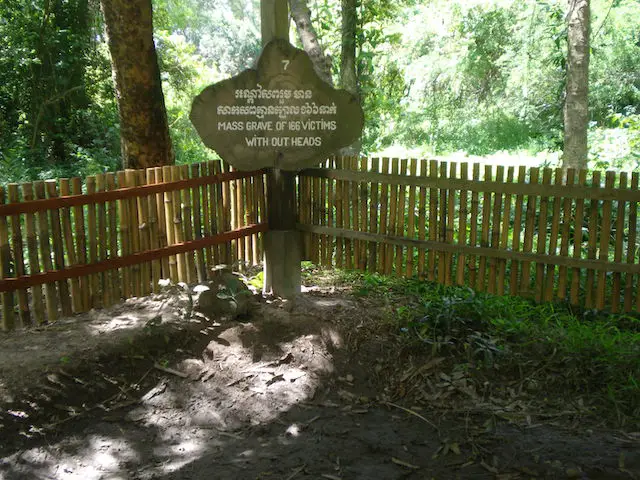
Bikini Atoll is associated mainly with the nuclear testing programme that the United States of America conducted.
Unlike natural disasters, tourists could not flock to Bikini Atoll immediately after, and even to this day, Bikini Atoll remains an extremely hazardous place to visit despite the US granting its safety in 1997.
It is argued that disaster tourists are putting themselves at risk by travelling to Bikini Atoll. There is still a significant level of radiation in the area and the extent of the damage caused below sea level has not been determined.
This particular disaster is categorised as nuclear tourism under the umbrella of dark tourism.
Berlin was the capital of the socialist single party regime of the former GDR. Now it is referred to the as ‘fall of the Berlin Wall’.
Berlin is home to a number of Holocaust and WW2 exhibitions and is popular with educational tourists. I took a student group there a few years ago and I would definitely recommend it for anybody studying tourism or history.
There are other countries that similar experiences too, including dark tourism in Vienna .

Robben Island can be observed as a form of Prison and persecution site tourism. In fact the prison has been recognised and preserved as a UNWTO World Heritage Site.
Prior to its conservation, the Island was a standing prison during the colonial wars, particularly dominante by successive colonial powers (Dutch and British).
Nowadays, the prison is a tourist site welcoming thousands of tourists each year. The tour guides are mostly ex-inmates, providing the tourist with an authentic account of what the prison was like when it was in operation as well as a much needed source of employment for the staff member.
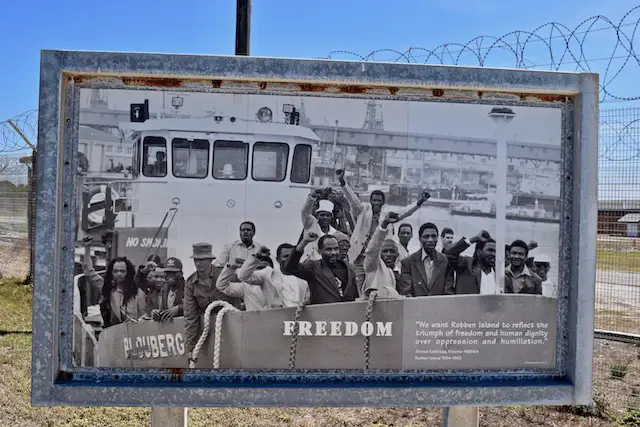
We visited during our trip to South Africa and found it very interesting and educational. I learnt a lot about Nelson Mandela and the history of Apartheid.
Rwanda is a small country in Central Africa and the place where one of the most tragic and largest genocides took place in 1994.
This is now a dark tourism site which is visited by many tourists each year.
One of the most interesting and unusual dark tourism sites that I have visited is Oradur Sur Glane .
In 1944, 642 villagers were massacred in Oradur Sur Glane. Shortly after the war, General Charles de Gaulle declared Oradour should never be rebuilt and instead it should remain a stark memorial to Nazi cruelty. It is fascinating (and eerie) because everything remains untouched to this day.
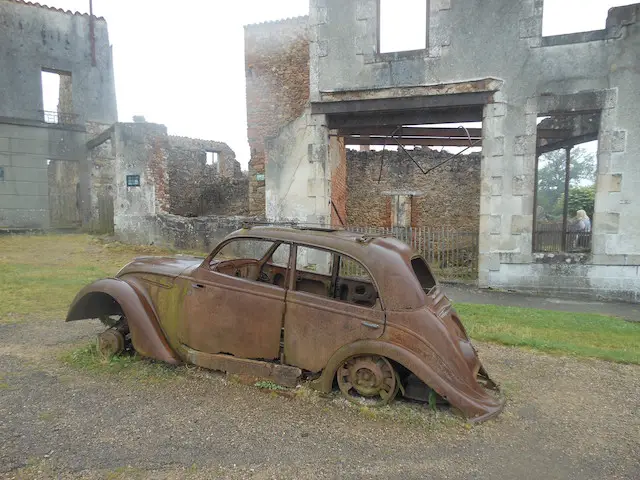
Have you ever watched the film Pompeii’?, If so then you will know exactly the history behind the city and what happened.
Pompeii has received an enormous amount of visitors and this may be the result of its publicity following its recent film. Before the film was released, Pompeii was attracted on average 2 million visitors annually, a number that remained very steady from 2002 onwards. However, following the release of the film, tourist numbers staggered upwards reaching over 3.5 million.
Another place that I have visited that was particularly memorable was the bone church known as Sedlec Ossuary.
We took a day trip from Prague to visit this unusual attraction, which was eerie and fascinating at the same time!
You can find out a bit more about the bone church in this video.
South of Mexico City, Don Julian Santana begun to hang dolls from treess and buildings as a protection against evil spirits. Today, the Island is known as ‘Island of the Dolls’. Dubbed as the ‘scariest place in Mexico’, it has now become a popular attraction with thrill-seeking dark tourists.
However, it has come to recent attention that the Island has been duplicated to fool tourists into believing they are visiting the original Island.
Now that we know a bit more about the concept of dark tourism, lets summarise the key points:
- Dark tourism involves visiting places associated with death, tragedy, and suffering.
- Dark tourism is a controversial form of tourism that raises ethical concerns.
Dark tourism has been around for centuries, but the term “dark tourism” was only coined in the 1990s.
- Some of the most popular dark tourism destinations include Auschwitz, Ground Zero, and the Killing Fields in Cambodia.
- Dark tourism can be educational and help people understand and appreciate history.
- Dark tourism can also be seen as exploitative and disrespectful to the victims and their families.
- Responsible tourism practices should be followed when engaging in dark tourism.
- The motivations for engaging in dark tourism vary, including curiosity, historical interest, and a desire to pay respects to the victims.
- Dark tourism can have positive economic impacts on local communities.
- Overall, dark tourism is a complex and nuanced form of tourism that requires careful consideration and reflection.
Lastly, lets finish off this article by answering some of the most commonly asked questions on this topic.
Dark tourism refers to travel to places that are associated with death, tragedy, and suffering.
What are some examples of dark tourism destinations?
Examples of dark tourism destinations include Auschwitz, Ground Zero, the Hiroshima Peace Memorial Park, and the Chernobyl Exclusion Zone.
Is dark tourism ethical?
The ethics of dark tourism are debated. Some people argue that it can be educational and help preserve historical memory, while others believe that it can be exploitative and disrespectful to the victims and their families.
What are some of the motivations for engaging in dark tourism?
Some people are motivated by curiosity, historical interest, a desire to pay respects to the victims, or a desire to challenge their own perceptions and beliefs.
Are there any risks associated with dark tourism?
Some dark tourism destinations may have physical or psychological risks, such as exposure to radiation or disturbing images.
How can I engage in responsible dark tourism?
Responsible dark tourism involves being respectful of the victims and their families, supporting local communities, and being aware of the impact of your visit.
Is dark tourism a new phenomenon?
Can dark tourism be beneficial for local economies?
Yes, dark tourism can bring economic benefits to local communities through increased tourism and job opportunities.
Can dark tourism be educational?
Yes, dark tourism can be educational and help people understand and appreciate history and its impact on society.
Should children be allowed to engage in dark tourism?
Whether children should be allowed to engage in dark tourism depends on the age of the child and the destination being visited. Parents should carefully consider the potential risks and impact on the child’s emotional well-being.
Dark tourism is an interesting concept that has reaped increased attention from both academics and the public in recent years. Whether you are visiting a cemetery, taking part in a zombie race or providing relief after a natural disaster, the opportunities to take part in dark tourism activities are far ranging.
It is fairly clear that there are a number of different types of tourism that all fall under the umbrella of dark tourism. And with the different types of dark tourism, comes a variety of different tourist motivations to visit.
However, despite the different motivations, there are still unresolved ethical concerns that need addressing. From inappropriate selfies to taking photos of people who are grieving, there are differing opinions on whether dark tourism is right or wrong.
If you enjoyed this article, I am sure you will love these too:
- What Sustainable Tourism Is + Why It Is The Most Important Consideration Right Now
- The Shocking Truth About Sex tourism
- What is sports tourism and why it is so big?
- What is responsible tourism and why does it matter?
- What is ethical tourism and why is it important?
Dark Tourism Locations
Leaderboard, visual style, switch template.
- International
- Education Jobs
- Schools directory
- Resources Education Jobs Schools directory News Search

Dark Tourism
Subject: Geography
Age range: 14-16
Resource type: Other
Last updated
5 December 2019
- Share through email
- Share through twitter
- Share through linkedin
- Share through facebook
- Share through pinterest

This lesson introduces dark tourism, provides examples of it and then has instructions for students to produce an informative poster on the subject together with a mark scheme. The main task is researched based and works best if students choose separate locations. In the past students have done locations such as Alcatraz, Robben island, the Cambodian Killing Fields, Pompeii, Death Railway, the wreck of the Titanic, 9/11 memorial and many more
Tes paid licence How can I reuse this?
Get this resource as part of a bundle and save up to 38%
A bundle is a package of resources grouped together to teach a particular topic, or a series of lessons, in one place.
7 lessons which goes from the basics of defining tourism, tourism increase, positives & negatives of tourism, Butler's model, the decline of UK seaside towns, the rejuvenation of a seaside creative task, sustainable tourism and creating a sustainable resort. This should take around 10 lessons. This is more suitable for the high end of KS3 and GCSE classes.
Your rating is required to reflect your happiness.
It's good to leave some feedback.
Something went wrong, please try again later.
This resource hasn't been reviewed yet
To ensure quality for our reviews, only customers who have purchased this resource can review it
Report this resource to let us know if it violates our terms and conditions. Our customer service team will review your report and will be in touch.
Not quite what you were looking for? Search by keyword to find the right resource:

IMAGES
VIDEO
COMMENTS
Dark Tourism. Subject: Geography. Age range: 14-16. Resource type: Other. File previews. pptx, 1.67 MB. docx, 12.48 KB. This lesson introduces dark tourism, provides examples of it and then has instructions for students to produce an informative poster on the subject together with a mark scheme. The main task is researched based and works best ...
Resource type: Worksheet/Activity. File previews. docx, 59.81 KB. pptx, 3.19 MB. docx, 25.43 KB. A lesson done with year 9 pupils on the growth of dark tourism, or thanatourism. Good discussion came from the plenary image of the pray for Paris symbol and possible increase of dark tourism in Paris. Mapping task with an information sheet included.
"Dark tourism should be banned" Dark tourism shops Rio De Janeiro Rio De Janeiro is a city located in Brazil in South America. The city is one of the places in the world which offers slum tourism. Slum tourism is a type of tourism that involves visiting impoverished areas. It can contribute to a change in the representation of the slums and ...
Lesson plan overview. This ESL lesson plan explores the topic of dark tourism. It is focused on speaking and listening. You can combine it with the lessons " Travel destinations ", " Accessible tourism ", " Adventure tourism and extreme tourism ", and " The Chernobyl disaster ". Speaking: The lesson starts with a speaking task.
To understand what dark tourism is and how people interact with hazardous landscapes for tourism. Lesson objectives. To know what dark tourism is. To understand about Vesuvius as a tourist site. To discuss how these interactions shape what people think about hazards and place. To think about how images, language and stories shape these ...
Dark tourism refers to the specific locations' tourists visit due to their links to death or tragedy. There are many theories as to why people are attracted to these places. This worksheet is a simple introduction to the topic looking at how similar destinations advertise themselves, whether it is thought right to advertise these places as ...
Year 9 Geography: Dark Tourism Knowledge Organiser (HT 1 and 2) What is dark tourism? Dark tourism is tourism that involves travelling to places associated with death and suffering. Top 10 most commonly searched dark tourism sites. Remember the horrors of the past to 1. Ground Zero, New York. 2. Auschwitz, Poland. 3. Alcatraz Prison, San ...
Dark tourism, also known as black tourism, thanatourism or grief tourism, is tourism that is associated with death or tragedy. The act of dark tourism is somewhat controversial, with some viewing it as an act of respect and others as unethical practice. Popular dark tourism attractions include Auschwitz, Chernobyl and Ground Zero.
Start with This Video to Learn More about Children, Youth, and Dark Tourism. 00:00. 03:03. % buffered. Every day around the world thousands of children visit monuments, museums, and sites of death and suffering. What do they have to say?
Dark Tourism - Death Marches. Subject: Geography. Age range: 11-14. Resource type: Lesson (complete) File previews. pptx, 3.72 MB. Dark Tourism lesson for KS3 or 4 classes. Could also be taught to History students studying the Holocaust. Including fully differentiated questioning and tasks.
Dark Tourism. Subject: Geography. Age range: 11-14. Resource type: Lesson (complete) File previews. docx, 124.51 KB. docx, 2 MB. Dark tourism has been around for many hundreds, if not thousands of years, but is only now coming to the fore. Dark tourism refers to the specific locations' tourists visit due to their links to death or tragedy.
Dark tourism (also thanatourism, black tourism, morbid tourism, or grief tourism) has been defined as tourism involving travel to places historically associated with death and tragedy. [ 1] More recently, it was suggested that the concept should also include reasons tourists visit that site, since the site's attributes alone may not make a ...
Dark tourism acknowledges the events, and provides us with the necessary platform to teach the wrongs which were perpetrated. In opposition to dark tourism. By contrast, the idea of dark tourism itself lends itself to slight distaste. For opponents, the motivation of tourists is at its heart, a morbid curiosity and the basic human fascination ...
Drag and drop the pins to their correct place on the image.. Ground Zero, Normandy, Pompeii, Mumbai, Hiroshima, Pripyat, Auschwitz , Hastings .
pptx, 32.39 MB. This is a two lesson resource focusing on: Dark Tourism: defining what it is, exploring examples including Chernobyl, New York etc. Most of the lesson is focused on debating how appropriate dark tourism is, including a silent debate task. Extreme Tourism: defining what it is in the context of Antarctica, locating Antarctica ...
New York: Routledge, 2017. ISBN: 978-1-138-20926-8. Informed by perspectives in sociology, behavior studies, and cultural studies, this book explores the motivations of the "death-seekers," tourists who seek out disaster and trag-edy. Timely focus is given to those visitors who take selfies at sites of disaster.
Chernobyl and Pripyat have been on the dark tourism map since the radioactive Exclusion Zone surrounding them opened up to visitors in 2011, but - prompted in part by the launch of popular HBO ...
Dark Tourism Locations Share Share Share by Angharad3. KS3 Y7 Geography Human geography. Edit Content. Embed. More. Leaderboard. Show more Show less . This leaderboard is currently private. Click Share to make it public. This leaderboard has been disabled by the resource owner. ...
Dark Tourism Travel Writing 4 lesson scheme. Short travel writing scheme using the theme of Dark Tourism. Several English language tranbsational writing tasks aimed at KS3/ KS4 LATs exploring Auschwitz, The Sedlec Ossuary, Chernobyl and the Mexican Dia De Los Muertos. Lesson powerpoints included and resources.
This lesson introduces dark tourism, provides examples of it and then has instructions for students to produce an informative poster on the subject together with a mark scheme. The main task is researched based and works best if students choose separate locations. In the past students have done locations such as Alcatraz, Robben island, the ...